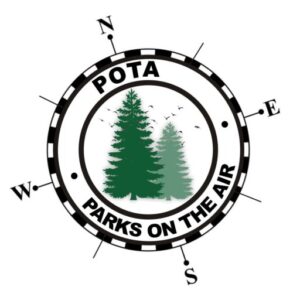POTA
Getting Started in POTA with Amateur Radio
Tips, Tricks, and Essential Gear
Parks on the Air (POTA) has gained popularity among amateur radio operators as an exciting way to combine outdoor exploration with radio communication. This activity involves making contacts with other operators while operating from designated parks and protected areas.
Obtaining the Required License
Before diving into POTA, you’ll need to obtain the appropriate amateur radio license for your country. This typically involves passing an examination normally administered by a ham radio club.
examination normally administered by a ham radio club.
Familiarize Yourself with POTA Guidelines
POTA has its own set of rules and guidelines that participants must adhere to. Familiarize yourself with these guidelines, which include park activation and chase rules, equipment requirements, and recommended operating practices.
Choosing the Right Gear
While POTA can be enjoyed with basic equipment, having certain gear can enhance your experience and improve your chances of successful activations. Here are some essential items to consider:
a. Portable HF Transceiver: Invest in a portable high-frequency (HF) transceiver that covers the amateur radio bands you plan to operate on. Look for a radio that is lightweight, battery-powered, and offers good performance for portable use.
b. Antenna System: Select a portable antenna system that suits your operating preferences and the environment you’ll be operating in. Options include wire antennas, vertical antennas, and compact multi-band antennas. Portable mast systems or telescopic poles are also useful for raising antennas.
c. Power Supply: Ensure you have sufficient power for your radio and accessories. Portable power options include batteries, solar panels, or portable power packs. It’s advisable to carry extra batteries or alternative power sources for longer activations.
d. Logging Software: Logging your contacts accurately is crucial for POTA. Use a quality software or if you prefer, pen and paper. Either will work fine. The only requirement is the log must be in ADIF (Amateur Data Interchange Format) to upload to POTA.
Planning Park Activations
POTA activations require careful planning to maximize your time and radio contacts. Here are some tips to consider:
a. Park Selection: Research and choose POTA-eligible parks near your location. The official POTA website provides a park directory and maps to help you find suitable options.
b. Check Park Rules: Ensure you are aware of any specific rules or regulations for the park you plan to activate. Some parks may have restrictions on antenna height, camping, or operating times.
Operating in the Field
a. Set Up Efficiently: Select a suitable location within the park and set up your equipment efficiently.
b. Be Patient and Listen: Listen to the bands before transmitting to avoid interfering with ongoing contacts. Be patient and wait for a clear frequency to call CQ (calling all stations).
c. Engage with the POTA Community: Participate in the POTA community by announcing your activation on the POTA spot page.
d. Be Courteous: Remember to follow proper radio etiquette, give accurate signal reports, and be respectful of other operators.
Conclusion
Participating in POTA is an excellent way to combine your love for amateur radio with outdoor adventures. By obtaining the necessary license, familiarizing yourself with POTA guidelines, and investing in suitable gear, you can embark on exciting park activations and connect with fellow operators. Plan your activations carefully, make use of tools like HAMRS or ACLog for efficient logging, and enjoy the thrill of making contacts while surrounded by nature. So, grab your gear, head to a park, and get started in the fascinating world of POTA with amateur radio! For more info, and to register, go to www.parksontheair.com